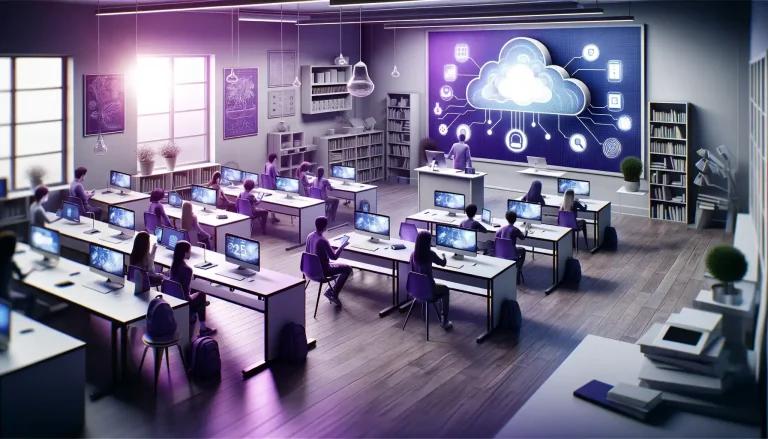Effective communication is the cornerstone of a thriving and engaged school community. Establishing clear channels for information flow ensures that educators, students, and parents are well-informed and actively involved in the learning process. In this discussion, we will explore eight practical and straightforward ways to enhance communication in schools.These strategies are designed to create an environment where communication is simple, transparent, and inclusive. By embracing these practical approaches, schools can cultivate a culture of collaboration, understanding, and shared success.
1. Regular staff meetings
Regular staff meetings play a pivotal role in establishing effective communication in schools. These meetings provide a dedicated time for educators, administrators, and support staff to come together, share updates, and discuss important matters. In a simple and direct way, staff meetings promote collaboration, ensuring that everyone is on the same page regarding school policies, upcoming events, and academic goals. This practice fosters a sense of teamwork, allowing school staff to address concerns collectively and work towards shared objectives. Overall, regular staff meetings create a structured platform for open communication, enhancing coordination and unity within the school community.
2. Parent-teacher conferences
Parent-Teacher Conferences are instrumental in establishing effective communication in schools. These conferences provide a direct and personal avenue for educators to communicate with parents about their child’s academic progress, strengths, and areas for improvement. In a straightforward manner, these meetings encourage a collaborative partnership between teachers and parents, fostering a shared commitment to a student’s success. This direct engagement allows for meaningful discussions about the student’s learning experience, creating a supportive environment where both educators and parents contribute to the child’s educational journey.
3. Utilizing cloud phone technology
Utilizing cloud phone technology can significantly contribute to establishing effective communication in schools. This technology simplifies communication among school staff by providing a centralized platform for calls, voicemails, and messages. In clear and accessible terms, cloud phone systems enable quick and efficient communication, ensuring that educators and administrators stay connected. Whether sharing important updates, coordinating events, or addressing urgent matters, the simplicity of this technology enhances overall communication, fostering a more connected and collaborative school environment.
4. Digital newsletters and announcements
Digital newsletters and announcements play a vital role in establishing effective communication in schools. In straightforward terms, these digital platforms provide a convenient way to share important information, such as events, achievements, and updates, with the school community. The simplicity of digital communication ensures that parents, students, and staff can easily access and stay informed about school happenings. By using these platforms, schools create a transparent and accessible channel, enhancing overall communication and fostering a sense of community engagement and awareness.
5. Online learning platforms
Online learning platforms are instrumental in establishing effective communication in schools. In clear and accessible terms, these platforms facilitate direct communication between teachers, students, and parents. By providing a space for sharing assignments, grades, and feedback, online platforms create a transparent channel for academic updates. This simplicity ensures that everyone involved in a student’s education can easily access information, fostering a collaborative environment. Through these platforms, schools enhance overall communication, enabling seamless interactions and active engagement in the learning process.
6. Social media presence
Maintaining a social media presence is a valuable tool for establishing effective communication in schools. In straightforward terms, social media platforms provide a direct and accessible way to share highlights, events, and important information with the school community. The simplicity of social media ensures that parents, students, and staff can stay informed about school activities, achievements, and announcements in real-time. By utilizing these platforms, schools create a dynamic and engaging channel for communication, fostering a sense of community pride and involvement while keeping stakeholders connected and well-informed.
7. Student-teacher collaboration
Student-teacher collaboration is pivotal in establishing effective communication in schools. In clear and accessible terms, encouraging open discussions and feedback sessions between students and teachers creates an environment where students feel comfortable expressing their thoughts and concerns. This direct engagement not only enhances understanding but also promotes a positive and communicative school culture. By valuing student input and fostering a sense of teamwork, schools strengthen overall communication, ensuring that students are active participants in their educational journey, and teachers can better address individual needs and challenges.
8. Clear communication protocols
Clear communication protocols are instrumental in establishing effective communication in schools. In straightforward terms, having well-defined procedures for sharing information, reporting issues, and addressing concerns streamlines communication. This simplicity ensures that important messages reach the relevant stakeholders in a timely manner. By creating an organized and accessible system, clear communication protocols contribute to a more cohesive and efficient school environment, allowing educators, administrators, and staff to collaborate seamlessly and ensuring that everyone is well-informed and engaged in the school’s operations.
Conclusion
In conclusion, implementing these eight straightforward strategies can make a significant impact on establishing effective communication in schools. From regular staff meetings and parent-teacher conferences to utilizing modern technologies like cloud phone systems and online learning platforms, these practices contribute to a transparent and collaborative school environment. Remembering that simplicity is key, these strategies collectively enhance overall communication, fostering a positive and engaged school atmosphere. Ultimately, prioritizing these practical approaches ensures that educators, students, and parents are well-connected, contributing to a successful and thriving school community.
